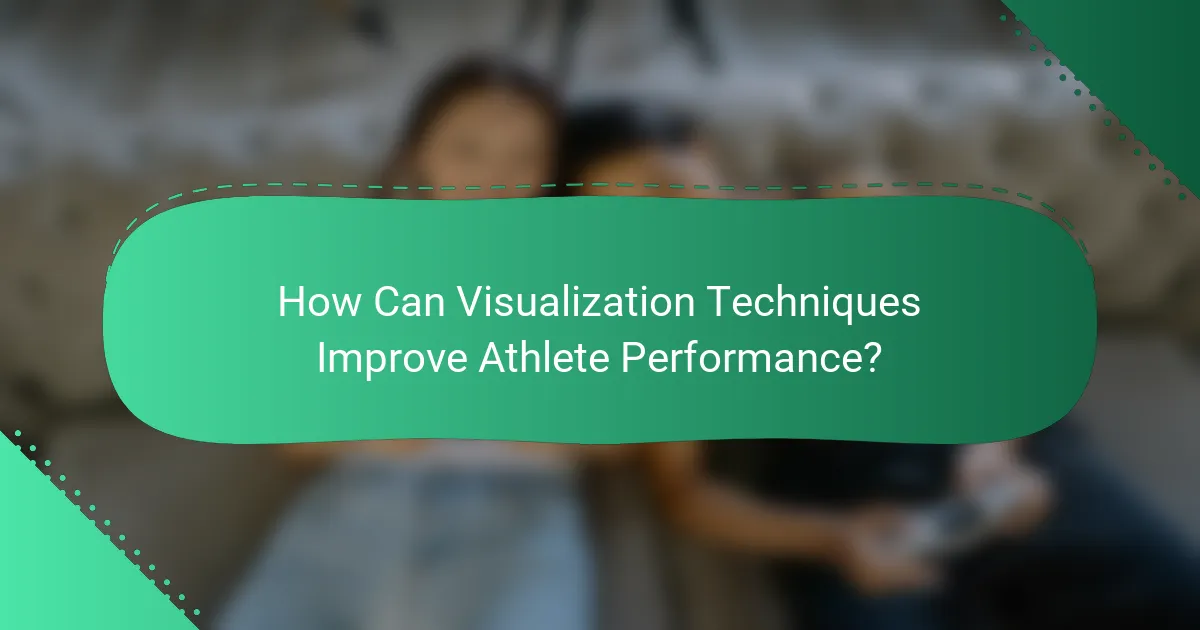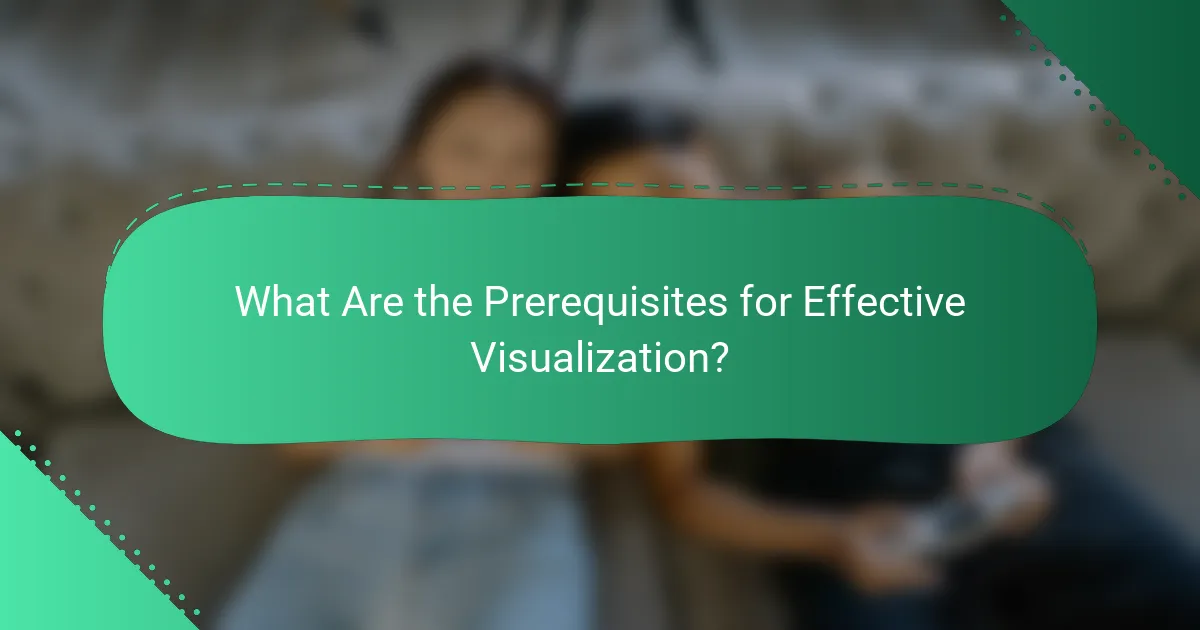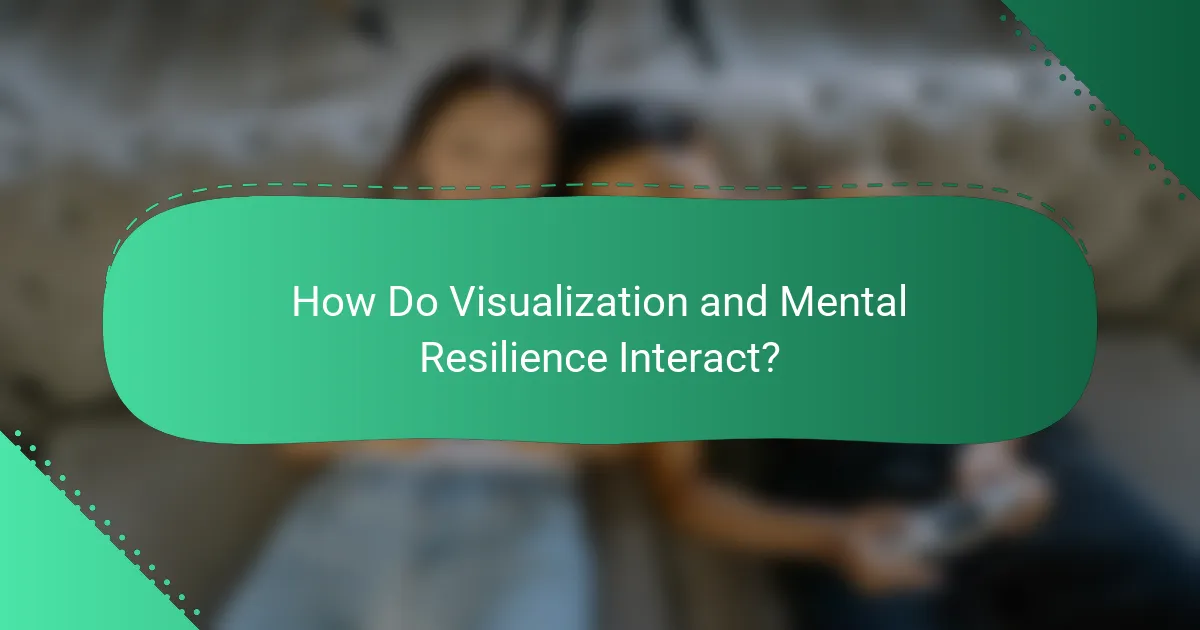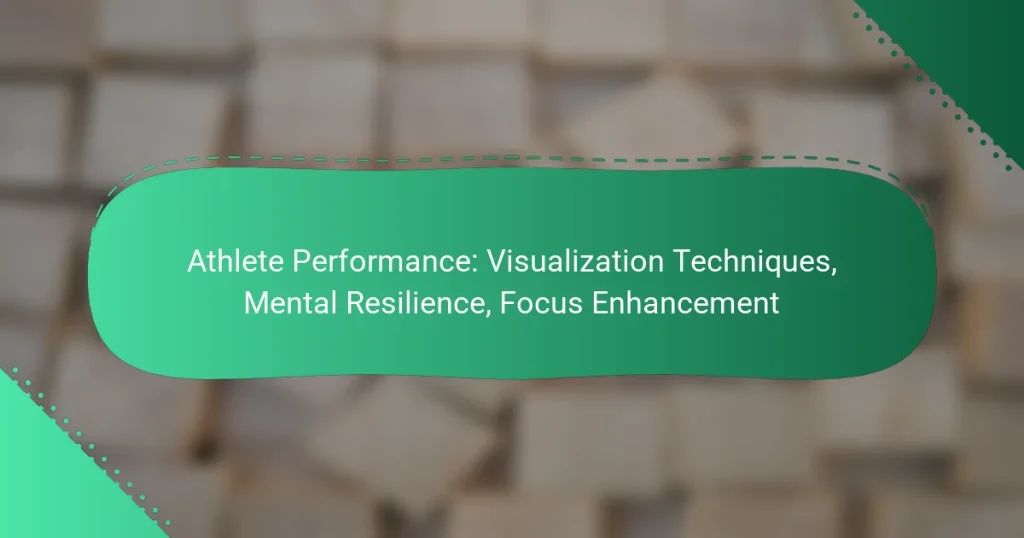Visualization techniques play a vital role in enhancing athlete performance by fostering improved focus, motivation, and skill acquisition. Coupled with mental resilience, these strategies empower athletes to navigate challenges and maintain concentration under pressure, ultimately leading to superior execution in their sport.

How Can Visualization Techniques Improve Athlete Performance?
Visualization techniques can significantly enhance athlete performance by improving focus, motivation, and skill acquisition. These mental strategies allow athletes to create vivid images of their goals and desired outcomes, leading to improved execution in their sport.
Enhanced focus through imagery
Imagery helps athletes concentrate on specific tasks by creating mental representations of their performance. This focused visualization can reduce distractions and enhance mental clarity, allowing athletes to enter a state of flow during competition. For example, a sprinter might visualize the perfect start and acceleration to maintain focus on their technique.
To maximize focus, athletes should practice visualization regularly, ideally in a quiet environment. This routine can help reinforce mental pathways that lead to improved concentration during actual events.
Increased motivation with mental imagery
Mental imagery can boost motivation by allowing athletes to envision their success and the rewards that come with it. By imagining themselves achieving their goals, athletes can cultivate a stronger desire to train and perform. For instance, a basketball player might visualize making the winning shot, which can inspire them to push through tough training sessions.
To harness this motivational power, athletes should create detailed mental images that include sensory details, such as sounds and feelings associated with success. This vividness can enhance emotional engagement and drive.
Visualization for skill acquisition
Visualization is an effective tool for skill acquisition, enabling athletes to mentally rehearse movements and techniques. By repeatedly visualizing a skill, such as a golf swing or a gymnastics routine, athletes can reinforce muscle memory and improve execution. Research suggests that mental practice can lead to performance improvements comparable to physical practice.
To use visualization for skill acquisition, athletes should break down complex skills into smaller components and visualize each step. Consistent practice can lead to greater proficiency and confidence in actual performance.
Case study: Michael Phelps’ visualization
Michael Phelps, the Olympic swimming champion, famously utilized visualization techniques to enhance his performance. He would mentally rehearse his races, visualizing every detail from the start to the finish. This practice helped him prepare for various scenarios, including potential challenges during competition.
Phelps’ success illustrates the power of visualization in high-pressure situations. His ability to mentally simulate races contributed to his remarkable achievements, showcasing how effective these techniques can be for elite athletes.
Techniques: guided imagery and mental rehearsal
Guided imagery involves listening to a coach or therapist who leads the athlete through a visualization process, often incorporating relaxation techniques. This method can be particularly beneficial for athletes new to visualization, as it provides structure and focus.
Mental rehearsal, on the other hand, allows athletes to practice their skills mentally without any external guidance. This technique can be done independently and is useful for reinforcing skills and strategies. Athletes should aim to practice both techniques regularly to maximize their benefits.

What Role Does Mental Resilience Play in Sports?
Mental resilience is crucial in sports as it enables athletes to cope with challenges, recover from setbacks, and maintain focus under pressure. This psychological strength directly influences performance, especially in high-stakes situations.
Definition of mental resilience
Mental resilience refers to the ability to adapt to stress, adversity, and challenges while maintaining optimal performance. It encompasses traits such as perseverance, emotional regulation, and a positive mindset, allowing athletes to bounce back from failures and setbacks.
This resilience is not innate; it can be developed and strengthened through intentional practice and training, making it a vital component of an athlete’s mental toolkit.
Impact on performance under pressure
The impact of mental resilience on performance during high-pressure situations is significant. Athletes with strong resilience can maintain composure, make better decisions, and execute skills effectively, even when stakes are high.
Research indicates that resilient athletes are more likely to experience flow states, where they perform at their peak, as they can manage anxiety and distractions that typically hinder performance.
Building resilience through training
Building mental resilience involves specific training techniques that enhance psychological strength. Techniques such as visualization, mindfulness, and goal-setting can help athletes prepare for and respond to challenges effectively.
Regularly practicing stress management strategies, such as controlled breathing and positive self-talk, can also fortify resilience. Incorporating these practices into daily routines can lead to significant improvements over time.
Examples: elite athletes and resilience
Many elite athletes exemplify mental resilience in their careers. For instance, tennis player Serena Williams has often spoken about overcoming setbacks and maintaining focus during critical matches, showcasing her mental fortitude.
Another example is Olympic swimmer Michael Phelps, who utilized visualization techniques and mental strategies to cope with pressure, enabling him to achieve remarkable success despite facing personal challenges.

How Can Focus Enhancement Techniques Benefit Athletes?
Focus enhancement techniques can significantly improve an athlete’s performance by sharpening their concentration and mental clarity during training and competition. By employing various strategies, athletes can reduce distractions, maintain their composure, and optimize their mental resilience.
Mindfulness practices for focus
Mindfulness practices, such as meditation and body scanning, help athletes develop a heightened awareness of their thoughts and feelings. These techniques encourage staying present, which can reduce anxiety and improve focus during high-pressure situations. Regular mindfulness sessions, even for just a few minutes daily, can lead to noticeable improvements in concentration over time.
To implement mindfulness, athletes can start with guided meditations or simple breathing exercises. Setting aside time before training or competitions to practice these techniques can create a mental buffer against distractions.
Breathing techniques to enhance concentration
Breathing techniques, such as diaphragmatic breathing and the 4-7-8 method, can enhance concentration by calming the nervous system and increasing oxygen flow to the brain. These methods help athletes regain focus quickly, especially during stressful moments. Practicing these techniques for a few minutes can lead to improved mental clarity and reduced performance anxiety.
Athletes can incorporate breathing exercises into their warm-up routines or use them as a quick reset during competitions. For instance, taking a few deep breaths before a critical play can help refocus and enhance performance.
Use of technology: focus apps
Focus apps can assist athletes in developing and maintaining concentration through guided exercises and tracking progress. Many apps offer features like timed focus sessions, reminders for mindfulness breaks, and analytics to monitor improvement. Utilizing these tools can help athletes stay accountable and motivated in their focus enhancement journey.
Popular focus apps include Headspace and Calm, which provide structured programs tailored for athletes. By integrating these apps into their daily routines, athletes can cultivate better focus habits over time.
Case study: focus strategies of Serena Williams
Serena Williams employs a variety of focus strategies to maintain her competitive edge. She practices mindfulness through visualization techniques, imagining successful plays and outcomes before matches. This mental rehearsal helps her stay focused and confident during high-stakes situations.
Additionally, Williams utilizes breathing techniques to manage stress and maintain concentration during matches. By incorporating these strategies into her routine, she has consistently demonstrated exceptional focus and resilience on the court, serving as a model for other athletes aiming to enhance their performance.

What Are the Prerequisites for Effective Visualization?
Effective visualization requires a clear understanding of personal goals, a distraction-free environment, and a consistent routine. These elements help athletes harness their mental imagery to enhance performance and build resilience.
Understanding personal goals
Identifying personal goals is crucial for effective visualization. Athletes should define what they want to achieve, whether it’s improving a specific skill, enhancing overall performance, or preparing for competition. Clear goals provide direction and focus during visualization sessions.
For instance, a runner might visualize completing a race in a specific time or executing a perfect sprint start. This clarity helps in creating vivid mental images that align with their aspirations.
Creating a distraction-free environment
A distraction-free environment is essential for effective visualization. Athletes should choose a quiet space where they can concentrate fully on their mental imagery without interruptions. This could be a designated room, a quiet corner, or even outdoors in a peaceful setting.
To enhance focus, consider using techniques such as closing your eyes, using noise-canceling headphones, or incorporating calming elements like soft music or nature sounds. These strategies help in immersing oneself in the visualization process.
Establishing a routine
Establishing a routine for visualization practice can significantly enhance its effectiveness. Athletes should aim to incorporate visualization into their daily training schedule, dedicating specific times for this mental exercise. Consistency helps in reinforcing the mental pathways associated with performance.
A simple approach is to set aside 10-15 minutes each day for visualization, ideally at the same time, such as after a workout or before bed. This regular practice can lead to improved focus and mental resilience over time.

How Do Visualization and Mental Resilience Interact?
Visualization and mental resilience are closely linked, as effective imagery techniques can enhance an athlete’s ability to cope with challenges. By mentally rehearsing scenarios, athletes can strengthen their psychological endurance and improve performance under pressure.
Visualization as a tool for building resilience
Visualization serves as a powerful method for athletes to cultivate resilience by creating mental scenarios that prepare them for various situations. For example, an athlete might visualize overcoming obstacles during a competition, which can help them develop a stronger mindset when faced with real-life challenges.
To effectively use visualization for resilience, athletes should practice regularly, ideally integrating it into their training routines. This could involve dedicating a few minutes each day to imagine successful performances, focusing on both the physical and emotional aspects of their sport.
Feedback loops between visualization and mental strength
The interaction between visualization and mental strength creates a feedback loop that reinforces both skills. When athletes visualize success, they often experience increased confidence, which in turn enhances their mental toughness during actual performance. This cyclical process can lead to improved outcomes in competitions.
To maximize this feedback loop, athletes should track their visualization practices alongside their performance metrics. Keeping a journal to note how visualization impacts their mental state and results can help identify effective techniques and areas for improvement.


